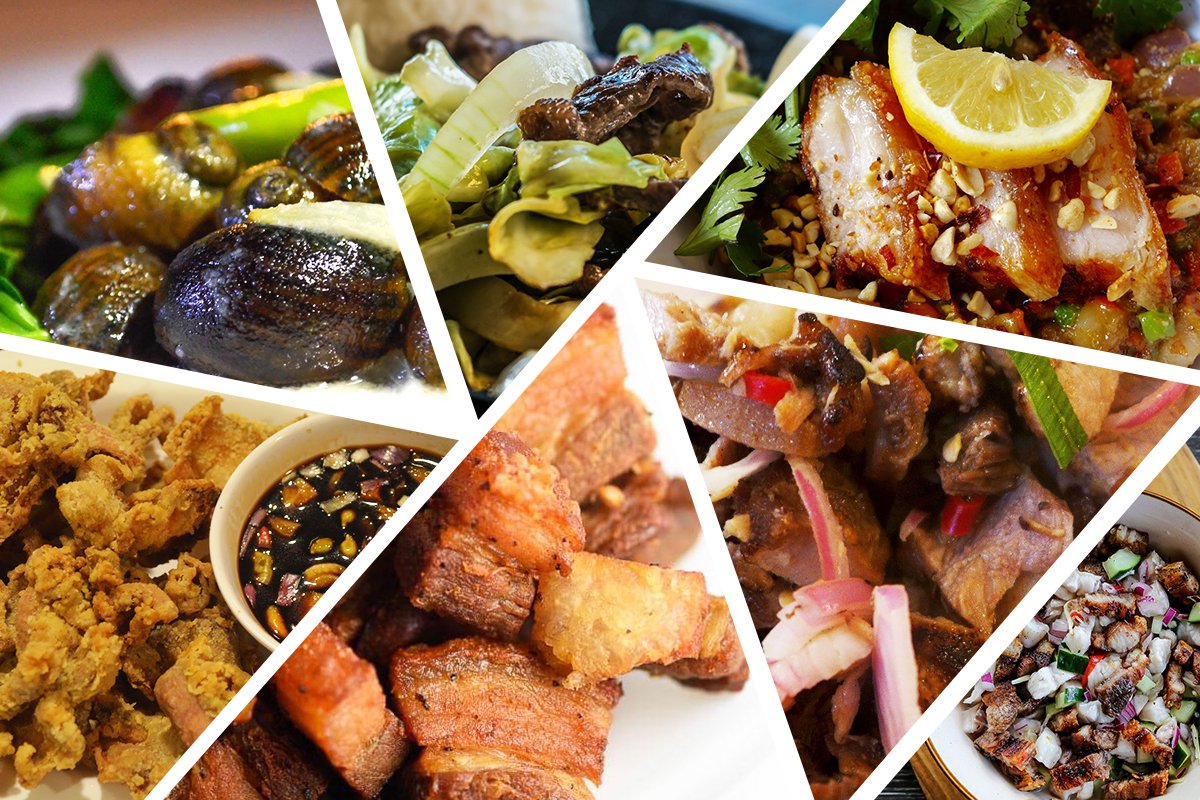
Pulutan: Distinctively Filipino
There are a number of words that unmistakably evoke a truly Filipino sense of identity – a common one, and arguably the most delicious, is pulutan.
For the uninitiated, pulutan, from the Filipino word “pulot”, meaning “to pick up”, is food that normally accompanies drinking. Few things unite Filipinos better than our love of drinking, and with that comes our shared understanding of what can be considered as pulutan.
So what makes good pulutan? Is it the saltiness perhaps, or the oily-ness of it, that makes you want to wash it down with a cold one? A defining trait that most dishes Filipinos consider as pulutan is that it has bold flavors combined with substantial textures – it’s not just salty or oily; it could be sour and smoky, warm and bitter, crispy and chewy, or creamy and spicy.
Here are a few dishes around the Philippines that are well-loved pulutan fare, best consumed with a bottle (or three) of ice-cold beer:
- Sisig
Starting with probably the most ubiquitous, traditional sisig is made up of chopped pig’s cheek and ears, diced onions, chicken liver, and is seasoned with soy sauce and calamansi, and served on a hot plate. Some are served with a fresh egg on top, some have mayonnaise. There are several variations that have appeared throughout the years like chicken or milkfish sisig, and a few creative ones like tofu sisig, oyster sisig, and even crocodile sisig.
- Sinuglaw
Sinuglaw is a marriage of two of the most popular ways of cooking in Visayas and Mindanao – “sinugba” meaning to grill, and “kinilaw” or to cook in vinegar. Chopped grilled liempo is mixed with kinilaw (usually tuna, or tanigue), and seasoned with green and red chilies and calamansi. It’s incredibly easy to prepare and combines two already very popular pulutan – how can you go wrong with that?
- Insarabasab
A favorite pulutan in Ilocos Norte, Insarabasab (or Sarabasab) directly means meat that is ‘roasted on an open fire’. It is char-grilled pork shoulder and pig face, mixed with onions, ginger, and tomatoes, with siling labuyo and soy sauce, sukang Ilokos, and calamansi. Some add mayonnaise, making it similar to sisig.

- Pinakupsan
Pinakupsan is basically pork belly pieces slowly cooked and fried in its own fat instead of deep frying it in oil. Its name comes from the Cebuano word “kupos” meaning “to shrink”, which happens to the pork chunks as it’s cooked. It is best consumed by dipping it in spiced vinegar.
- Pigar Pigar
Pigar Pigar is a simple dish made out of thin slices of beef and liver, quickly deep-fried and served with onions. It is a very popular street food in Dagupan – so popular that it even has its own festival. The original version uses carabao meat instead of beef.

- Ginabot
Another popular street food, this time from Visayas, is ginabot – Cebu City’s own take on chicharon bulaklak. It is dried and salted pork intestines, deep fried until golden brown. It is crispy and oily, making it the classic pulutan. Consume in moderation.
- Ginataang Kuhol
Popular in Central and Southern Luzon, kuhol, a type of edible snail, is cooked in coconut milk, with ginger, garlic, onions, siling labuyo, and garnished with leeks or similar vegetables. Some serve it de-shelled, but most cook it in their shells (after very thorough cleaning) and consume it by picking the meat out with a toothpick.
- Papaitan
Papaitan is another famous Ilocano Dish that consists of either goat or beef innards (tripe, liver, and intestines, sometimes also the kidney, pancreas, and heart). It’s a soup dish, and best served piping-hot, with a squeeze of calamansi. Its name was derived from the Filipino word “pait” meaning “bitter” – the soup’s bitterness comes from adding bile into the soup.




